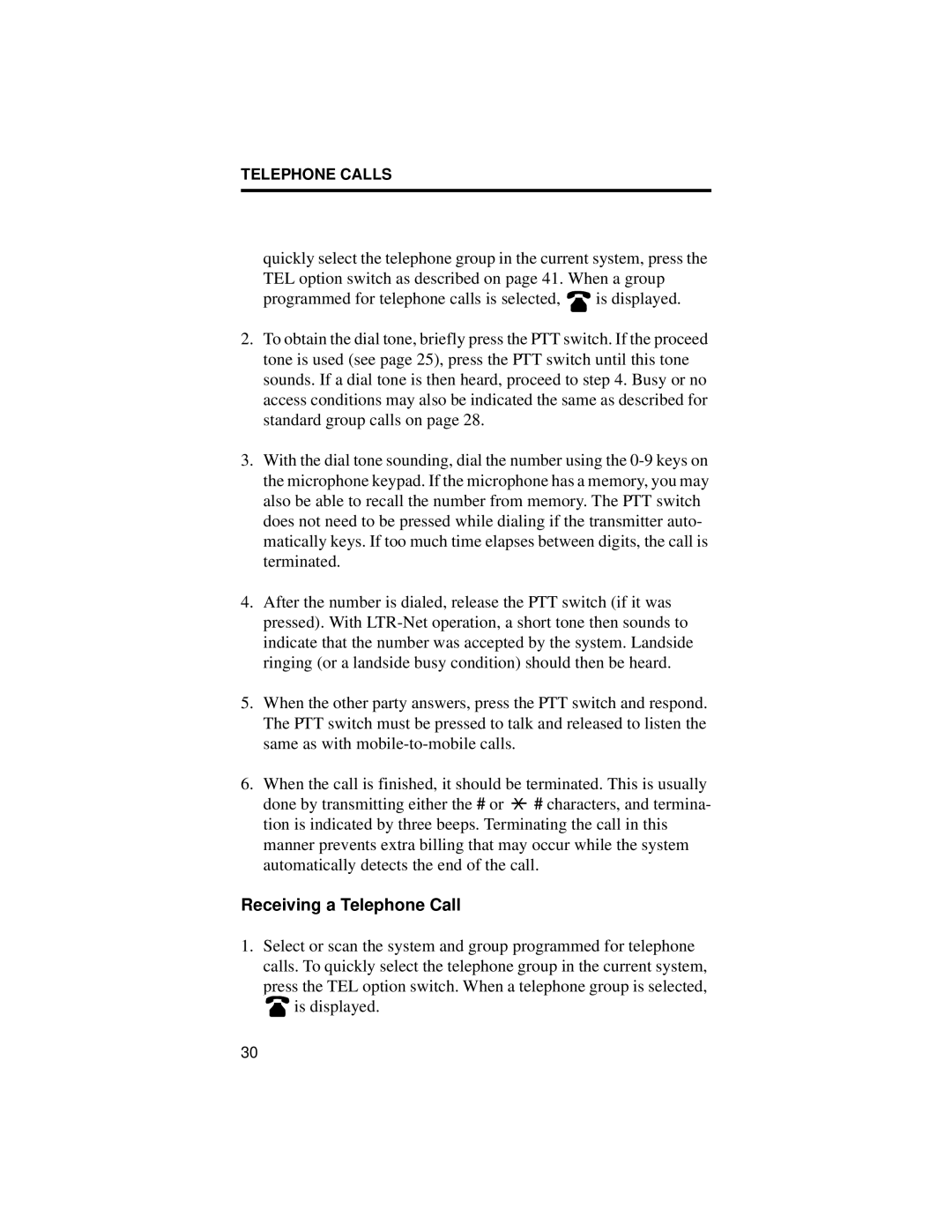
TELEPHONE CALLS
quickly select the telephone group in the current system, press the TEL option switch as described on page 41. When a group
programmed for telephone calls is selected, ![]()
![]()
![]() is displayed.
is displayed.
2.To obtain the dial tone, briefly press the PTT switch. If the proceed tone is used (see page 25), press the PTT switch until this tone sounds. If a dial tone is then heard, proceed to step 4. Busy or no access conditions may also be indicated the same as described for standard group calls on page 28.
3.With the dial tone sounding, dial the number using the
4.After the number is dialed, release the PTT switch (if it was pressed). With
5.When the other party answers, press the PTT switch and respond. The PTT switch must be pressed to talk and released to listen the same as with
6.When the call is finished, it should be terminated. This is usually done by transmitting either the # or X # characters, and termina- tion is indicated by three beeps. Terminating the call in this manner prevents extra billing that may occur while the system automatically detects the end of the call.
Receiving a Telephone Call
1.Select or scan the system and group programmed for telephone calls. To quickly select the telephone group in the current system, press the TEL option switch. When a telephone group is selected, ![]()
![]()
![]() is displayed.
is displayed.
30
